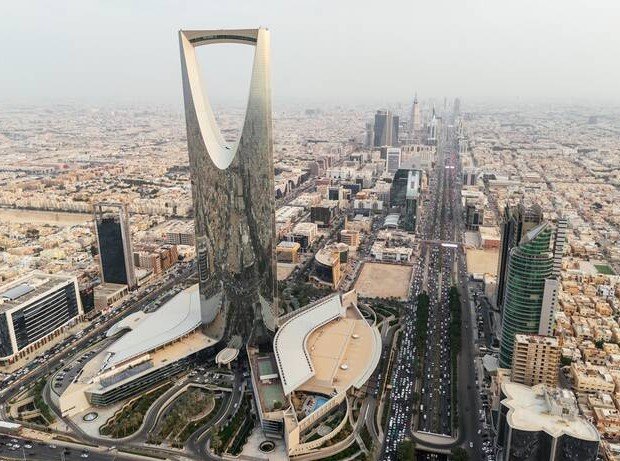Dar Al Arkan’s eco-tech leap signals a greener future for Middle East construction
Saudi Arabia isn’t just chasing record-breaking skyscrapers anymore. It’s now setting new standards with a different kind of landmark — a 9.9-meter villa built almost entirely by a robot. And behind it all is Dar Al Arkan, one of the Kingdom’s biggest real estate developers, pushing ESG to the front lines of construction.
Tucked into the edges of Riyadh’s rapidly expanding suburbs, the three-story house doesn’t look too different at first glance. But take a closer look, and it’s clear this isn’t a regular concrete-and-steel build. This villa was printed — yes, printed — with only three workers on site. No scaffolding, no bricks, and way less mess.
From Sand to Sustainability
Dar Al Arkan’s latest project is no PR stunt. It’s a signal. A signal that Saudi Arabia’s Vision 2030 — the country’s grand transformation plan — isn’t just about shiny tourism hubs and futuristic megacities. It’s also about sustainability. And the old way of building things? Well, it’s getting a serious rethink.
This villa, created using 3D Construction Printing (3DCP) technology from Danish firm COBOD, shows just how much has changed. What used to take weeks now takes just days. The carbon footprint? Slashed.
This isn’t some niche project tucked away in a lab. It’s already been lived in.

Why This Tech Matters — A Lot
There’s more going on than just printing walls. This technology brings real, measurable benefits:
-
30% less energy needed inside the house thanks to smart insulation.
-
On-site solar panels that power lights and heating — no outside electricity required.
-
Fewer workers on site (just three!) means lower labor costs and emissions from transport and machinery.
It’s a cleaner, leaner way to build — and one that could reshape how desert cities expand without torching the environment.
Small Villa, Big Signal to Global Markets
For Saudi Arabia, this project sends a message well beyond the Gulf. The real estate sector has long been associated with waste, high emissions, and inefficiency. But Dar Al Arkan’s approach flips the script.
The building ticks multiple ESG boxes. It’s got:
-
Environmentally efficient construction.
-
Social benefit through future housing affordability.
-
Governance in line with global sustainability standards.
And here’s the thing — global investors are watching. ESG funds are ballooning, and real estate companies that can prove their green credentials are far more likely to attract them. Dar Al Arkan knows this. They’re not just building homes anymore. They’re building trust.
Cutting Time, Cutting Costs — and Cutting Carbon
The 3D printing process isn’t just novel — it’s brutally efficient.
Let’s break it down:
| Metric | Traditional Build | 3DCP Villa by Dar Al Arkan |
|---|---|---|
| Time to Build | ~4 weeks | <1.5 weeks |
| On-site Labor Required | 12-15 workers | 3 workers |
| Material Waste | High | Minimal |
| Carbon Emissions Estimate | 100% baseline | ~40% reduction |
| Energy Use Post-Occupancy | Standard | ~30% lower |
The numbers don’t lie. This villa is cheaper, cleaner, and faster to build. And that’s why other Gulf nations, and even some European developers, are quietly studying Dar Al Arkan’s model.
Beyond the Villa: What Comes Next?
Of course, one house doesn’t change a city. But this one is more than symbolic.
Dar Al Arkan is already planning more 3D printed developments — including multi-unit housing and low-cost residential projects that could seriously tackle urban sprawl without wrecking the environment.
This matters. In cities like Riyadh and Jeddah, population growth is surging. Traditional construction can’t keep up — or do it cleanly. 3DCP might just be the answer.
This isn’t just about innovation. It’s about survival.
Solar Panels and Smart Systems Make It Smarter
The villa isn’t just built smart. It lives smart.
Nine rooftop solar panels supply the electricity needs for essential systems — lighting, heating, and ventilation. That’s particularly handy in Saudi Arabia, where temperatures regularly hit 45°C.
Inside, a suite of integrated smart-home tools help regulate temperature, detect leaks, monitor energy use, and even alert homeowners to maintenance needs. It’s not sci-fi. It’s happening now.
One sentence, here it is.
This level of efficiency wasn’t achievable just a few years ago, but the mix of ESG mandates and rising tech capabilities makes it possible — and commercially viable.
Pressure Mounts on Other Developers
There’s no sugarcoating it — Dar Al Arkan has raised the bar. Big time.
Other Saudi developers are now in a bind. Keep building the old-fashioned way and risk falling behind, or invest in technologies that are still, for many, unfamiliar and expensive up front.
But here’s the rub — governments are starting to demand this kind of sustainability. And investors, especially those managing billions in ESG funds, won’t touch dirty construction.
Basically, everyone’s watching.
This is where real estate and regulation crash into each other. And it’s only going to get louder.
Is This a One-Off or the Start of a Trend?
It’s tempting to see this as a one-time marvel. But industry insiders say otherwise.
Dar Al Arkan has already committed to expanding its ESG-linked developments beyond Saudi Arabia. Talks are underway in Dubai and even parts of North Africa. The technology, once thought too expensive or too fragile for desert climates, has proven it can work — and scale.
Sure, not every project will be as flashy. But ESG is no longer a box-ticking exercise. It’s the business model.
One developer. One villa. But maybe — just maybe — a whole new way to build the future.
